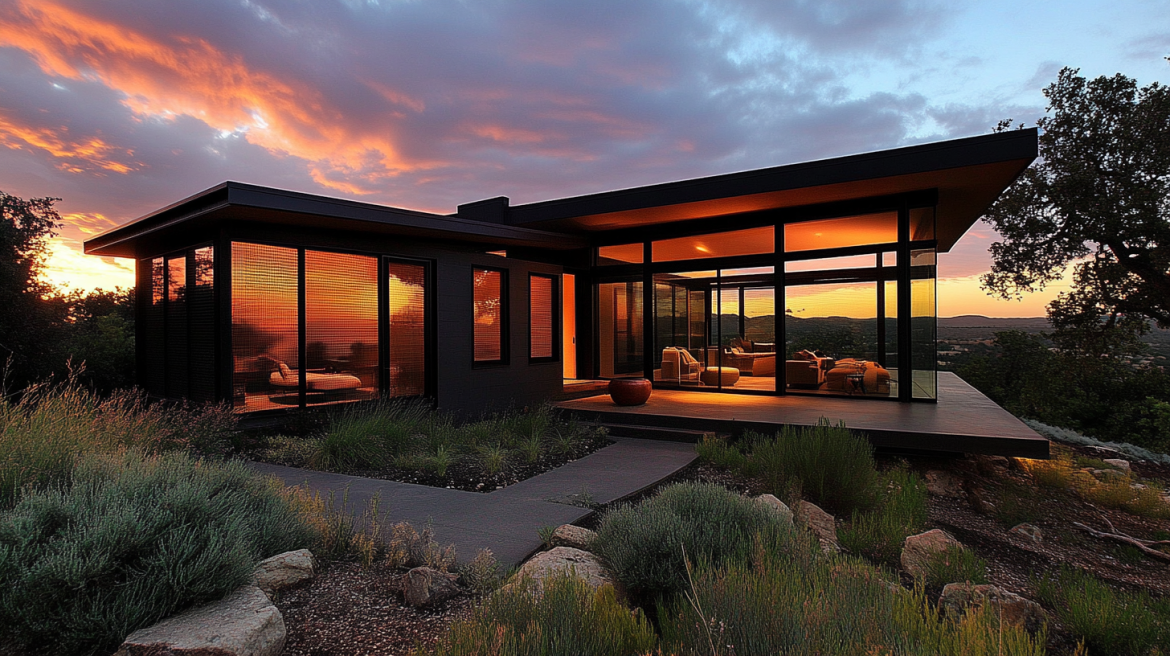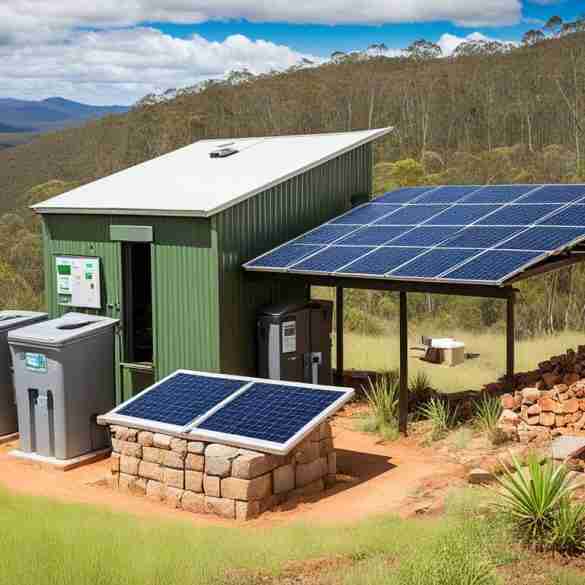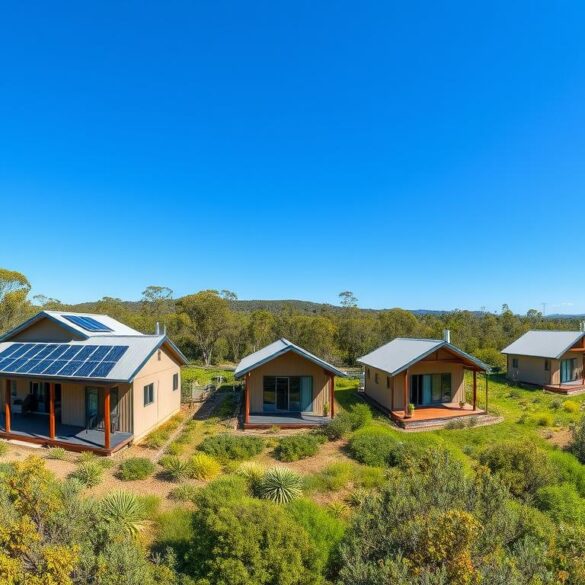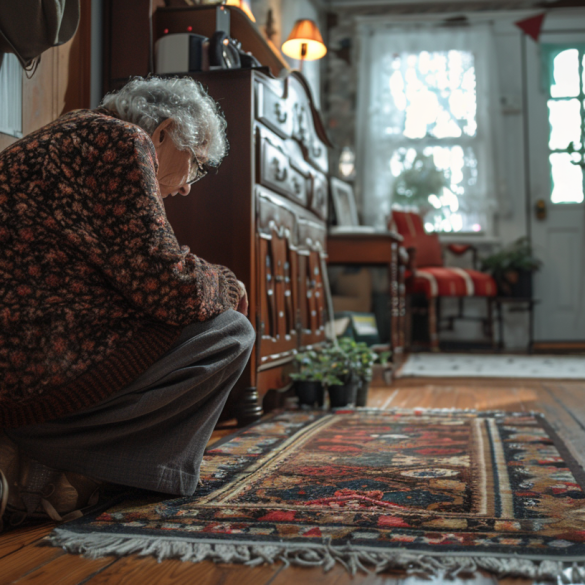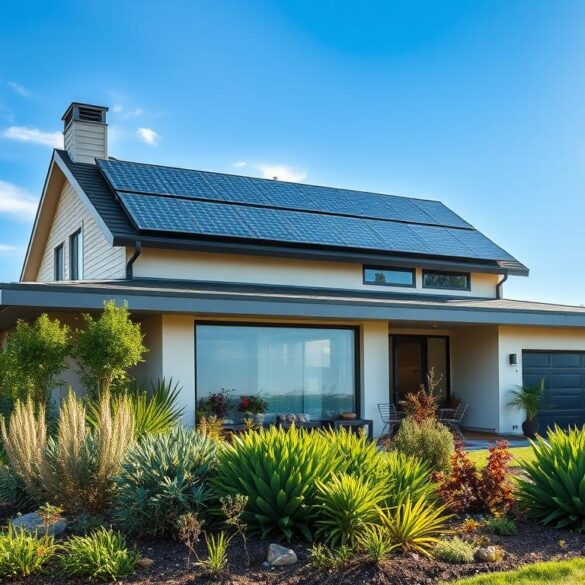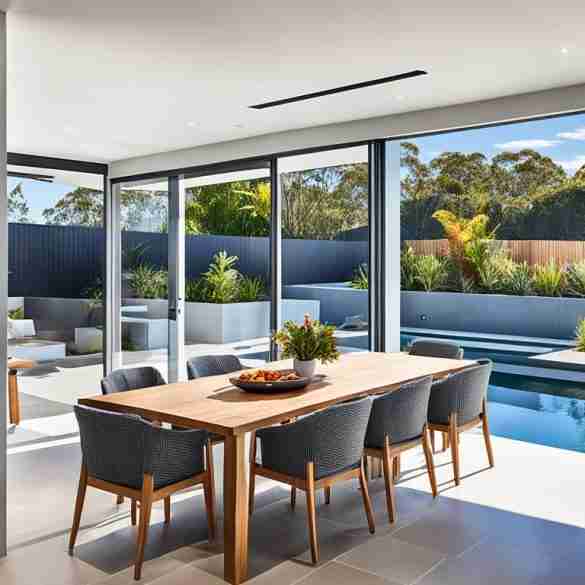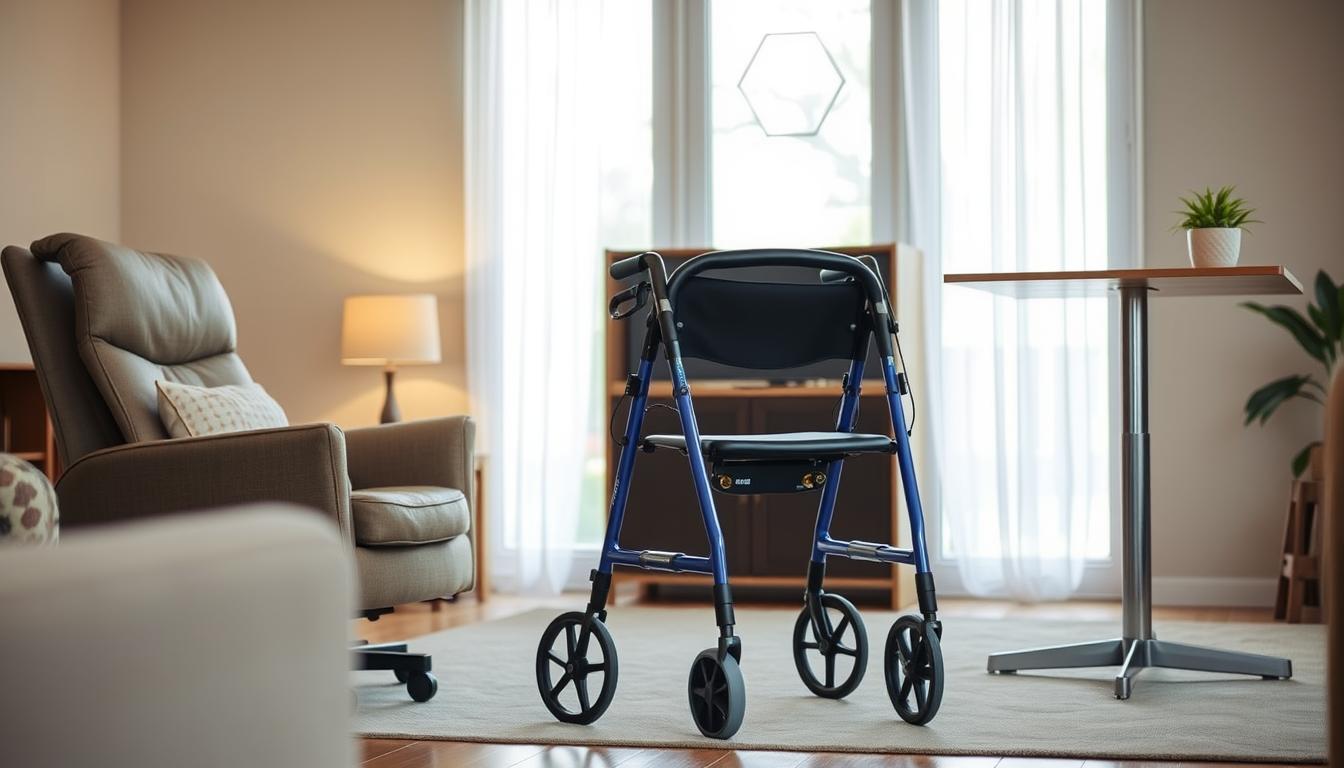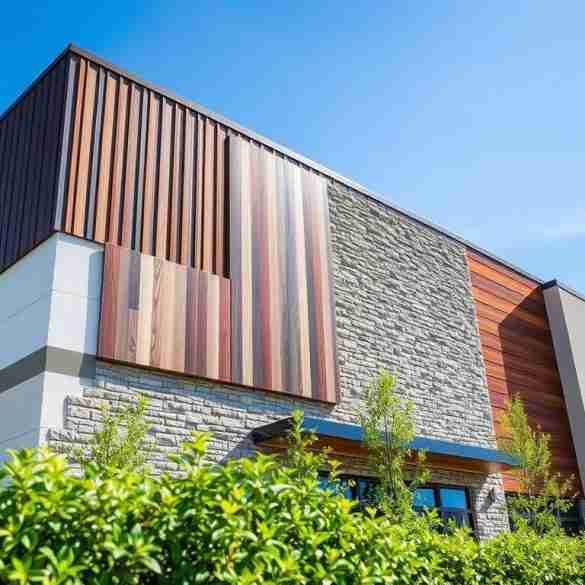Did you know 2.2 million Australians live in high or extreme bushfire zones? This shows we really need to protect our homes from fires1. After big fires in 2009, many are making their homes safer2.
Retrofitting Homes for Bushfire Resistance is very important, even if it’s not required2. Up to a million homes are at risk in these areas1. This guide will help you make your home safer from fires.
First, find out your home’s Bushfire Attack Level (BAL). This level shows how safe your home is from fires2. Most homes lost in fires are because of embers, so we focus on stopping that1.
Small changes can help a lot. Sealing cracks and using metal mesh screens are good starts1.
Table of Contents
Key Takeaways
- Millions of Australians live in high-risk bushfire areas
- Retrofitting isn’t mandatory but highly recommended
- Understanding your Bushfire Attack Level (BAL) is crucial
- Ember attack is the primary cause of house loss in bushfires
- Simple retrofits like sealing cracks can significantly improve safety
- Australian building regulations guide bushfire protection
- Regular maintenance is essential for bushfire safety measures
Assessing Your Home’s Current Bushfire Vulnerabilities
It’s key to know how your home might do in a bushfire. You need to do a fire risk check. This helps find weak spots and plan how to fix them.
Identifying Bushfire Attack Level (BAL) Ratings and Their Importance
BAL ratings show how safe your home is from bushfires. They range from BAL-LOW to BAL-FZ (Flame Zone). A new online tool can help find your home’s BAL rating3.
Common Vulnerabilities in Older Homes
Older homes might have gaps, flammable stuff, and places for debris. These can make your home more at risk. Malcolm Hackett, who survived a bushfire, says each home needs its own check-up3.

Creating a Bushfire Retrofit Action Plan for Your Property
Having a plan to make your home safer is a must. Start by fixing the weakest parts. The Bushfire Resilience Rating Home Self-Assessment App can help4. It’s a tool for both new and old homes in danger zones3.
Evaluating Local Bushfire Risk: Terrain, Vegetation, and Climate
Your area’s terrain, plants, and weather affect bushfire risk. Look at these factors. The Guidelines for Bushfire Resilient Building offer useful tips for your home3.
“Individual assessment for each home is crucial to address vulnerabilities and ensure continuous improvement based on up-to-date information.” – Malcolm Hackett, Bushfire Survivor
By checking your home’s weak spots, you can make a plan to make it safer for bushfires. Remember, keeping your home safe is an ongoing job. You need to check and update your plans often.
| BAL Rating | Description | Risk Level |
|---|---|---|
| BAL-LOW | Minimal risk | Very Low |
| BAL-12.5 | Ember attack risk | Low |
| BAL-19 | Increased ember attack and burning debris | Moderate |
| BAL-29 | Increased ember attack and burning debris with heat flux | High |
| BAL-40 | Increased ember attack, burning debris, and heat flux | Very High |
| BAL-FZ | Direct exposure to flames, ember attack, and heat flux | Extreme |
Upgrading Exterior Materials to Improve Bushfire Resistance
It’s important to make your home’s exterior stronger against bushfires. How safe your home is depends on its condition and how close it is to plants5. Let’s look at how to make your home’s outside better for fighting bushfires.
Fire-Resistant Cladding Options for Exterior Walls
For your walls, pick materials that don’t burn like fiber cement or metal. These help protect against embers and make your home safer from fires. It’s also important to fix any gaps in your home’s walls5.
Insulating Materials That Offer Fire Protection
Choose insulation that doesn’t burn, like rock wool. It keeps your home cool and protects it from fire. Using insulation that fights fire is part of living green in Australia, making your home safe and energy-smart.
How to Retrofit Windows and Doors for Heat and Ember Resistance
Make your windows and doors stronger with tough glass and metal frames. Add ember guards to keep out sparks. Places like roof spaces and under floors are at risk from sparks5. Getting advice from experts can help you know how safe your home is6.

Choosing Non-Combustible Roofing Materials
Choose roofs that don’t burn, like metal or tiles. Make sure all gaps are sealed to stop sparks from getting in. Roofs are very important because sparks can travel far6.
“Even well-prepared buildings can be destroyed by bushfires. Early evacuation remains the most appropriate life safety protection strategy.”
Retrofitting your home is optional but smart for safety6. Upgrading your home’s outside makes it much safer from bushfires.
Bushfire-Resistant Landscaping and Property Management
Creating a defensible space around your home is key for bushfire safety. This means managing vegetation and landscaping to lower fire risks.
Creating Defensible Space: Clearance Zones and Vegetation Management
Make clear zones around your home to stop fires from spreading. Start by removing flammable stuff within 30 feet of your home. Trim trees, prune shrubs, and keep your lawn watered in this area.
Then, create a second zone up to 100 feet away. Here, thin out and manage vegetation.
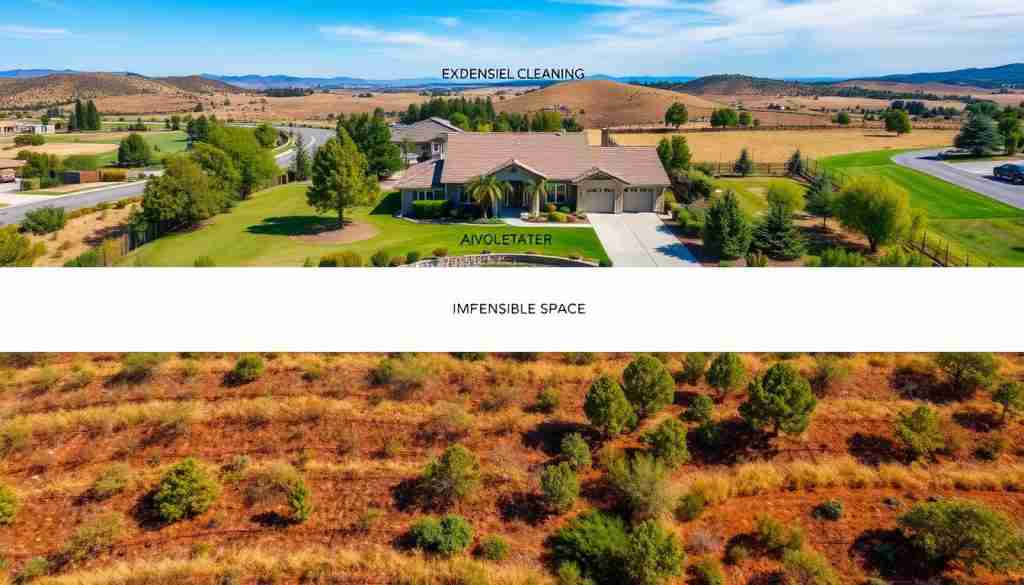
Recommended Plant Species for Fire-Prone Areas
Pick plants that resist fire to lower risks. Native plants with lots of moisture and low oil are best. Good picks include:
- Kangaroo Paw
- Bottlebrush
- Native Fuchsia
- Pig Face
These plants can slow fire spread while keeping your garden looking great.
Hardscaping Techniques: Gravel Paths, Driveways, and Perimeter Defenses
Use non-flammable materials in your design. Gravel paths and driveways act as fire breaks. Stone walls or concrete barriers can slow fire too.
These elements not only protect from fire but also make your property look better.
Installing Ember-Proof Fencing and Gates
Use ember-proof fencing and gates to protect your property. Choose materials like metal or masonry. Embers can get in through tiny gaps, so seal all openings7.
Keep up with maintenance, like removing leaves and cleaning gutters, for fire safety.
Only about 10 percent of Australian houses are safe from local bushfire risks8. By using these strategies, you’re helping keep your home and community safe from fires.
Reinforcing Roofs and Gutters Against Ember Attacks
Protecting your home from bushfires starts at the top. Your roof and gutters are prime targets for ember attacks. These attacks cause 80% of home losses during bushfires9. Let’s explore how to fortify these vulnerable areas.
Ember Guards: Your First Line of Defense
Ember guards play a crucial role in bushfire protection. These devices, made of corrosion-resistant steel mesh, shield vulnerable parts of your home. They have openings smaller than 2mm, blocking flying embers9. Install them on roof vents and between roof tiles to prevent ember entry.
Fire-Resistant Roofing and Vents
Upgrading to fire-resistant roofing materials is a smart move. For existing roofs, focus on retrofitting vents and eaves. Seal gaps and use fire-resistant materials to bolster your roof’s defenses. Remember, even well-placed trees can help by slowing wind speed and catching embers10.
Gutter Shields: Keeping Leaves and Embers at Bay
Gutter shields are essential for leaf and ember control. These systems prevent the buildup of combustible debris in your gutters. Choose gutter protection that complements your roof’s design while offering maximum defense against embers.
Maintaining Roof Safety
Regular roof maintenance is key to fire safety. Replace damaged tiles, seal gaps, and ensure all components are in good condition. For metal roofs, pay extra attention to sealing gaps at eaves, ridges, valleys, and gable cappings.
| Roof Component | Retrofitting Action | Benefit |
|---|---|---|
| Roof Vents | Install ember guards | Prevents ember entry |
| Gutters | Add gutter shields | Controls leaf and ember accumulation |
| Eaves | Seal gaps with fire-resistant material | Reduces vulnerability to embers |
| Entire Roof | Regular maintenance and inspection | Ensures ongoing fire resistance |
By implementing these measures, you’re not just protecting your roof; you’re safeguarding your entire home against bushfire threats. Remember, proper bushfire preparation involves multiple factors beyond just roof protection10. Stay vigilant and maintain these defenses to keep your home safe during fire seasons.
Retrofitting Internal Spaces for Bushfire Safety
Internal fire protection is key. Retrofitting your home’s interior is crucial. Focus on fireproof insulation and safe storage to boost your home’s bushfire safety.
Fire-Resistant Ceiling and Wall Insulation Options
Choosing the right insulation is vital. Rockwool and fire-rated fiberglass are great for ceilings and walls. They offer thermal insulation and fire resistance11.
Enhancing Interior Walls with Fireproofing Materials
Fire-resistant plasterboard is a top pick for walls. It slows fire spread, giving you time to leave12.
Safe Storage Solutions for Flammable Items
Safe storage for flammable items is crucial. Keep them away from fire sources. Use fire-resistant cabinets or lockers to stop fires from growing fast.
Setting Up a Safe Space or Fire-Shelter Room
A fire shelter in your home is a last resort. It must be made of non-combustible materials and sealed well. Proper sealing is key for safety.
| Retrofit Element | Benefits | Considerations |
|---|---|---|
| Fireproof Insulation | Slows fire spread, improves energy efficiency | Professional installation recommended |
| Fire-Resistant Walls | Enhances structural integrity during fires | May require updating electrical systems |
| Safe Storage Solutions | Reduces risk of fire escalation | Regular maintenance and organization needed |
| Fire Shelter Room | Provides last-resort protection | Requires careful planning and construction |
These internal fire protection steps boost your home’s safety and energy efficiency1211.
Selecting Bushfire-Resistant Windows, Doors, and Screens
Keeping your home safe from bushfires starts with the right windows, doors, and screens. These parts are key in fighting off ember attacks and heat.
Benefits of Double-Glazed and Fire-Rated Windows
Fire-rated windows are a must in fire-prone areas. They have toughened glass and frames that don’t burn. Special fire-resistant glass can handle extreme heat for hours, as Australian Standard AS1530.413 says.
Retrofitting Doors with Fire-Resistant Materials
It’s key to upgrade your doors for fire safety. Here are some ideas:
- Fire-resistant door framing
- Thicker doors from fire-safe materials
- Bushfire shutters for risky spots
- Metal mesh screens with small holes
Installing Metal Mesh Screens to Prevent Ember Entry
Ember-proof screens are crucial. Put metal mesh screens with 2mm holes on all windows and doors. They stop embers while letting air and light in.
Sealing Techniques for Gaps Around Doors and Windows
Sealing gaps is key to keep embers out. Use fire-resistant seals and weather stripping. Focus on roof and wall joints for better fire safety13.
| Element | Bushfire Protection Feature |
|---|---|
| Windows | Double-glazed, toughened glass |
| Doors | Fire-resistant materials, thicker construction |
| Screens | Metal mesh with 2mm maximum aperture |
| Seals | Fire-resistant weather stripping |
Homes at highest risk (BAL-FZ score) might need extra protection like shutters13. Get a Bushfire Attack Level report to see what your home needs. This report shows your home’s fire risks and helps you choose the best protection1314.
Essential Systems and Equipment for Bushfire Preparedness
Preparing your home for bushfires is crucial in fire-prone areas. This section covers key systems and equipment to boost your property’s resilience against fire threats.
Installing External Sprinkler Systems and Water Pumps
Bushfire sprinklers are a vital defense against ember attacks. These systems create a protective barrier around your home, wetting surfaces to prevent ignition. Install high-pressure pumps to ensure water reaches all areas of your property.
Rainwater Tanks and Storage for Bushfire Resilience
Water storage is essential for firefighting efforts. Large rainwater tanks provide a reliable water source during emergencies. Position tanks strategically for easy access and connect them to your sprinkler system for seamless operation.
Backup Power Options for Emergency Situations
Emergency power ensures your critical systems function during outages. Consider installing a generator or solar battery system to keep pumps, sprinklers, and essential appliances running. This backup power can be lifesaving in bushfire scenarios.
Fire-Resistant Ventilation Systems to Prevent Smoke Ingress
Smoke prevention is key to maintaining air quality inside your home during a bushfire. Install fire-resistant vents with ember guards to block smoke and embers while allowing fresh air circulation. Proper ventilation helps create a safer indoor environment.
| System | Purpose | Key Features |
|---|---|---|
| Bushfire Sprinklers | Protect against ember attacks | High-pressure, wide coverage |
| Water Storage | Provide firefighting water supply | Large capacity, easy access |
| Emergency Power | Ensure system functionality | Generator or solar battery backup |
| Ventilation System | Prevent smoke ingress | Fire-resistant, ember guards |
Implementing these systems significantly enhances your home’s bushfire preparedness. Roof systems are particularly vulnerable to ignition through direct flame contact or burning debris within the roof cavity15. Retrofitting roofs can help protect homes against most bushfire hazards but may not guard against direct flame contact or fires from burning vegetation15. In Western Australia, some of the driest climatic regions are prone to bushfire attacks, particularly in the southwest regions where numerous fire events have devastated bushland areas and damaged properties in recent years16.
Financial Support for Bushfire Retrofitting in Australia
Bushfire grants and retrofit funding are key for home safety in fire-risk areas. In Australia, 90% of buildings in fire-prone zones aren’t fire-safe. This shows we need to upgrade them fast17.
Available Government Grants and Subsidies for Retrofitting
Local councils offer rebates to make homes safer from bushfires. For example, one council gives 25% of costs (up to $1,000) and 50% of approval costs (up to $500) every 5 years18. These grants help pay for things like fire-resistant roof sarking or metal gutter guards.
Understanding Insurance Benefits for Bushfire-Resistant Homes
Insurance companies give discounts for homes with fire safety measures. By adding these features, you might get lower premiums. This shows your home is less at risk.
How to Budget for a Comprehensive Bushfire Retrofit
When retrofitting for bushfire safety, planning your budget is crucial. First, check your home’s Bushfire Attack Level (BAL) rating. Then, focus on the most important upgrades you can afford. Some work might not need planning approval, but homes in danger zones might need special permits18.
Community Resources and Programs for Fire Safety Improvements
Community efforts are vital for fire safety. For example, some places have online events on bushfire planning, ember protection, and landscaping. These events are free for those who can’t afford them17.
| Retrofit Action | Potential Rebate | Benefit |
|---|---|---|
| Fire-rated sarking in roof | Up to $1,000 | Improved ember protection |
| Metal gutter guards | Up to $1,000 | Reduced leaf litter accumulation |
| Non-combustible external shutters | Up to $1,000 | Enhanced window protection |
Using these financial aids and community resources can greatly help protect your home. Always check with your local council for retrofit funding in your area.
Working with Professionals for Bushfire Retrofit Projects
After the 2019-2020 bushfires destroyed over 5,900 buildings, finding the right expert is key. This is especially true for ensuring your home’s safety and strength.
How to Find a Bushfire Retrofit Specialist in Australia
Start by reaching out to your local fire authority or professional groups. They know how garden design and plant choice can help a house survive fires19. Look for contractors with experience in risky areas, as more people live there19.
Key Questions to Ask Before Hiring Contractors
Ask if they know about the Bushfire Management Overlay in Victoria19. Check if they understand how topography, weather, and plants affect fires19. Also, ask about their quality control during the project.
Essential Qualifications for Retrofitting Contractors
Make sure they have the right fire safety certifications and know AS 395919. They should also know about “firewise” landscaping, which ranks plants by flammability19. Remember, upgrading your home for bushfire safety can cost around $24,596 over ten years20.
How to Ensure Quality Control in Retrofitting Projects
Do regular checks and keep detailed records of all work done. Your contractor should know that certain plants can help protect your home, but leaving early is still the best plan on very dangerous fire days19. Working with experts and staying informed can greatly improve your home’s fire safety.

